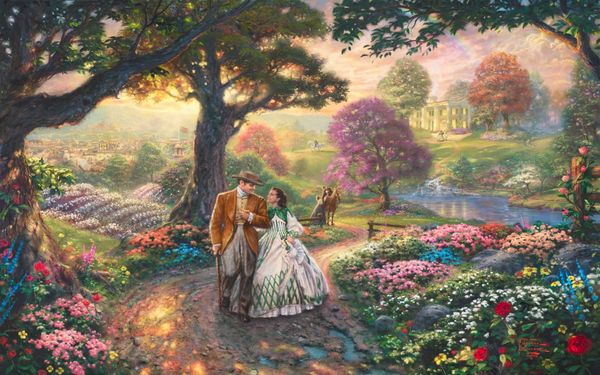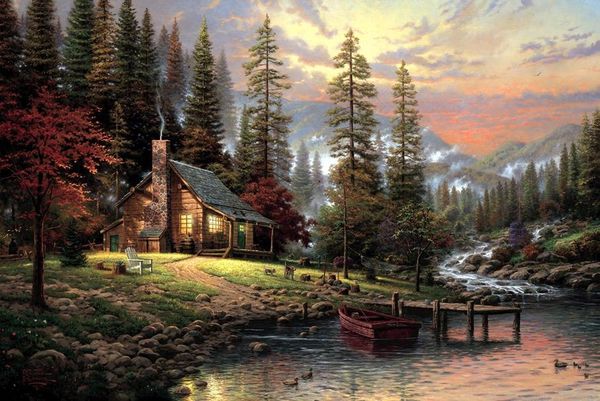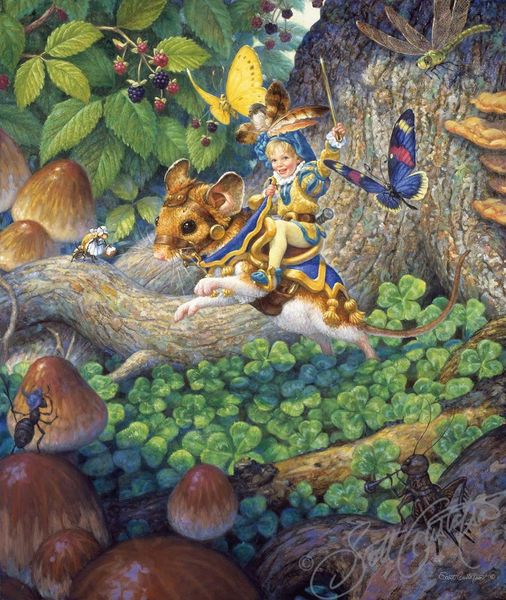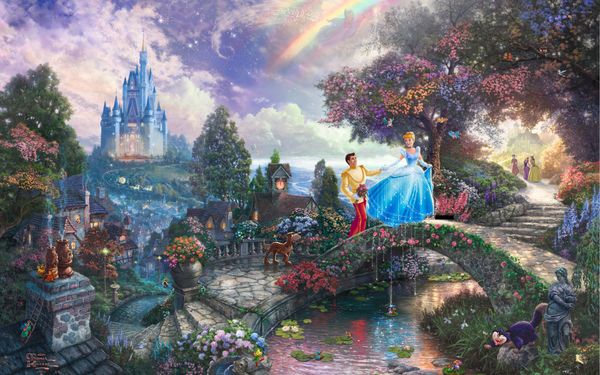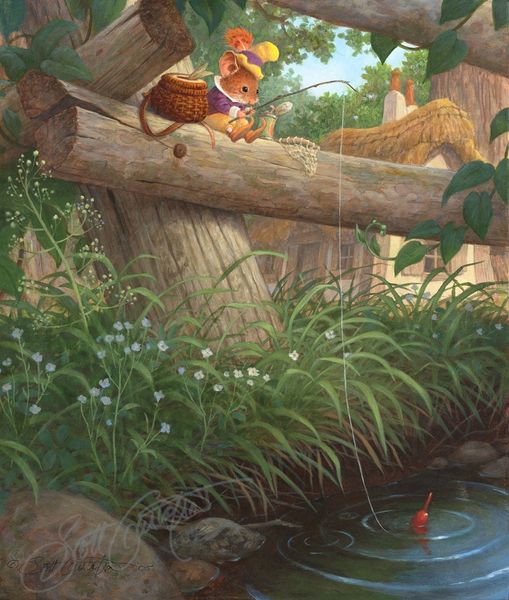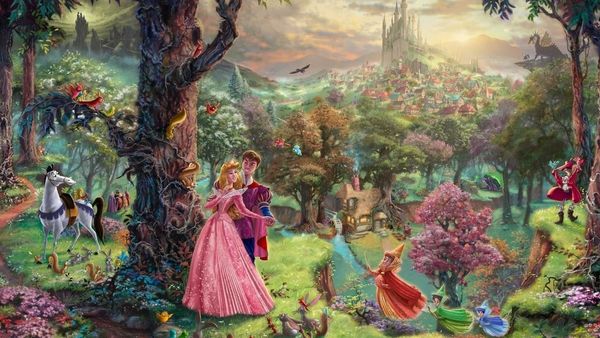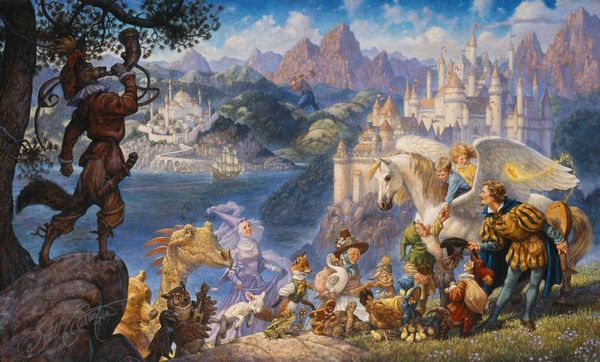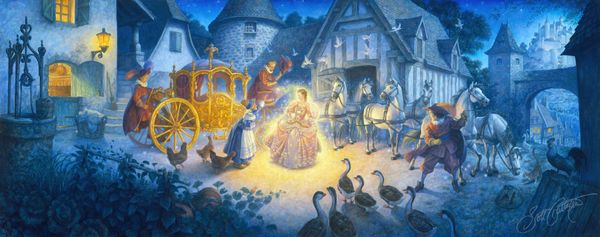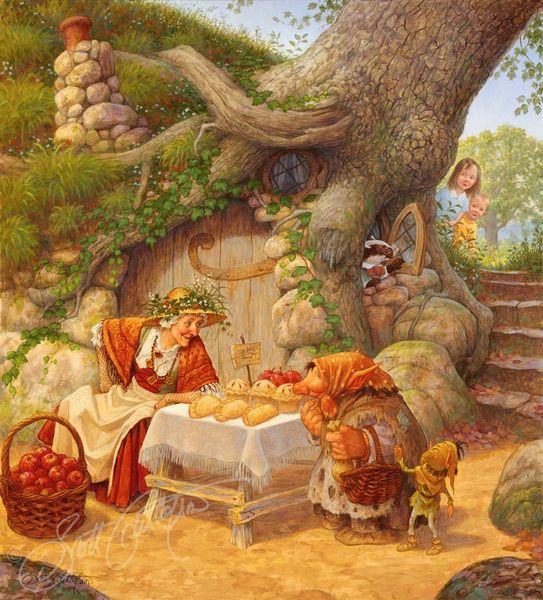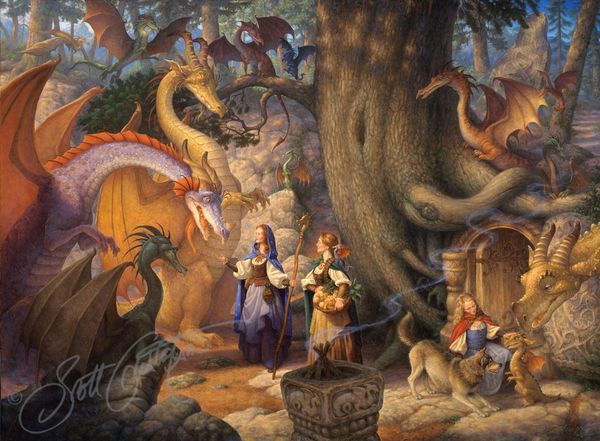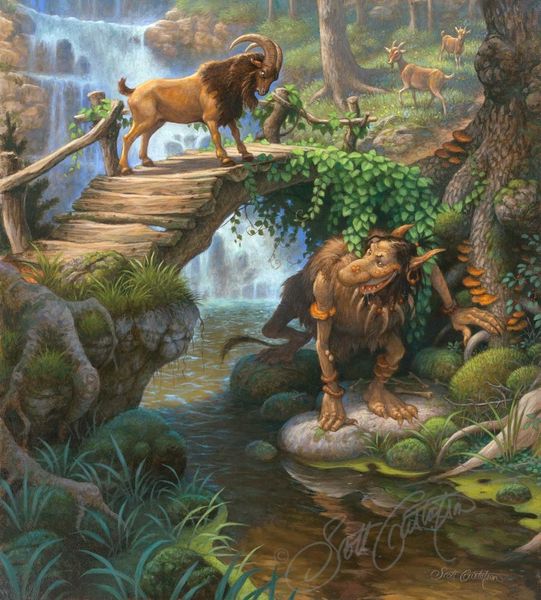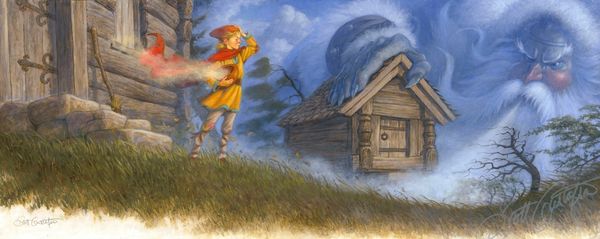
painting, acrylic-paint
#
tree
#
fantasy art
#
painting
#
landscape
#
fantasy-art
#
acrylic-paint
#
figuration
#
romanticism
#
surrealism
#
nature
Copyright: Thomas Kinkade,Fair Use
Editor: So, here we have "Disney Dreams" by Thomas Kinkade, rendered with acrylic paint. It's very idyllic, almost saccharine, in its depiction of…well, I guess, a Disney dreamscape? It looks like Snow White in the foreground, doesn’t it? How do you interpret this work? Curator: It's demonstrably illustrative, adhering to representational standards within a very specific ideological framework. I am drawn to examine how the luminescence—the calculated highlights—functions within the composition. Do you observe how the artist uses light not merely to illuminate forms but to create an almost tangible sense of divine presence? Editor: Yes, it's hard to miss! It's as if the painting itself is glowing. Almost like a movie backdrop with carefully designed sources to drive a narrative about pure beauty. Is that something Romanticism is often dealing with? Curator: The emphasis on light and shadow certainly echoes Romanticism's engagement with sublime experience, yet observe how rigorously controlled and sanitized that experience is here. Notice how the "natural" landscape is meticulously arranged, every flower and stone seemingly placed for maximum aesthetic impact. What effect does that hyper-realism achieve, do you think? Editor: It feels very artificial and somewhat manufactured. I think maybe, in trying so hard for beauty, it feels overwhelming and staged rather than genuinely inviting. Curator: Precisely. It invites us to consider what that construction of 'beauty' signifies within our contemporary visual culture and how its effect ultimately separates us from experiencing a less curated moment. It encourages closer viewing habits. Editor: I agree. I suppose I was letting the Disney associations do the thinking, and I realize now it’s about much more, that what we take as real and natural is actually deliberately created for the image and emotion of pure “Disney Dreams.” Curator: Indeed. Considering that very relationship, one begins to notice Kinkade's skillful use of pictorial elements within popular, almost trademarked, iconography. A curious interplay between expectation and composition emerges with even a surface-level understanding of theory.
Comments
No comments
Be the first to comment and join the conversation on the ultimate creative platform.
